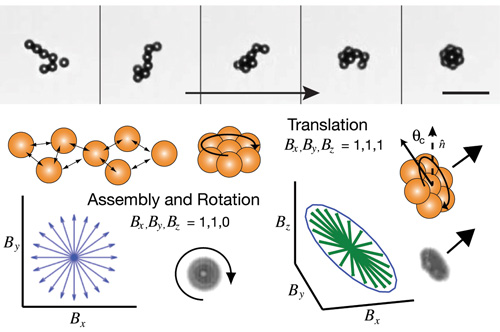 |
This diagram illustrates the assemblage and rolling of the microwheels. |
GOLDEN, Colo., Jan. 6, 2016 – Biomedical microwheel research conducted by members of the Colorado School of Mines Department of Chemical and Biological Engineering has been published in Nature Communications.
The paper, “Surface-enabled propulsion and control of colloidal microwheels,” co-authored by CBE Department Head David Marr, Associate Professor Keith Neeves, Postdoc Onur Tasci and Associate Professor Paco Herson of the University of Colorado-Denver, demonstrates microscale biomedical devices shaped like wheels can be injected into the body and effectively “roll” to treat areas in need – such as arterial blockages.
“Propulsion at the microscale is akin to swimming though molasses, a challenge biomedical microbots must overcome,” said Marr. “The microbots may either mimic microorganisms using flagella or employ artificial methods to direct themselves. Inspired by our shift to cars from animal-based transport, we show that microwheels the size of a single cell can be constructed and powered with magnetic fields.”
Marr notes the devices could be assembled using a “ship in a bottle” approach: injected into the body and then assembled into wheels that roll like car tires to the afflicted tissue using low-strength external magnetic fields. The resulting microwheel movement occurs with greatly improved speeds and directional control compared to other propulsion strategies.
To learn more, see Nature Communications.
Contact:
Karen Gilbert, Director of Public Relations, Colorado School of Mines | 303-273-3541 | kgilbert@mines.edu
Kathleen Morton, Digital Media and Communications Manager, Colorado School of Mines | 303-273-3088 | kmorton@mines.edu
